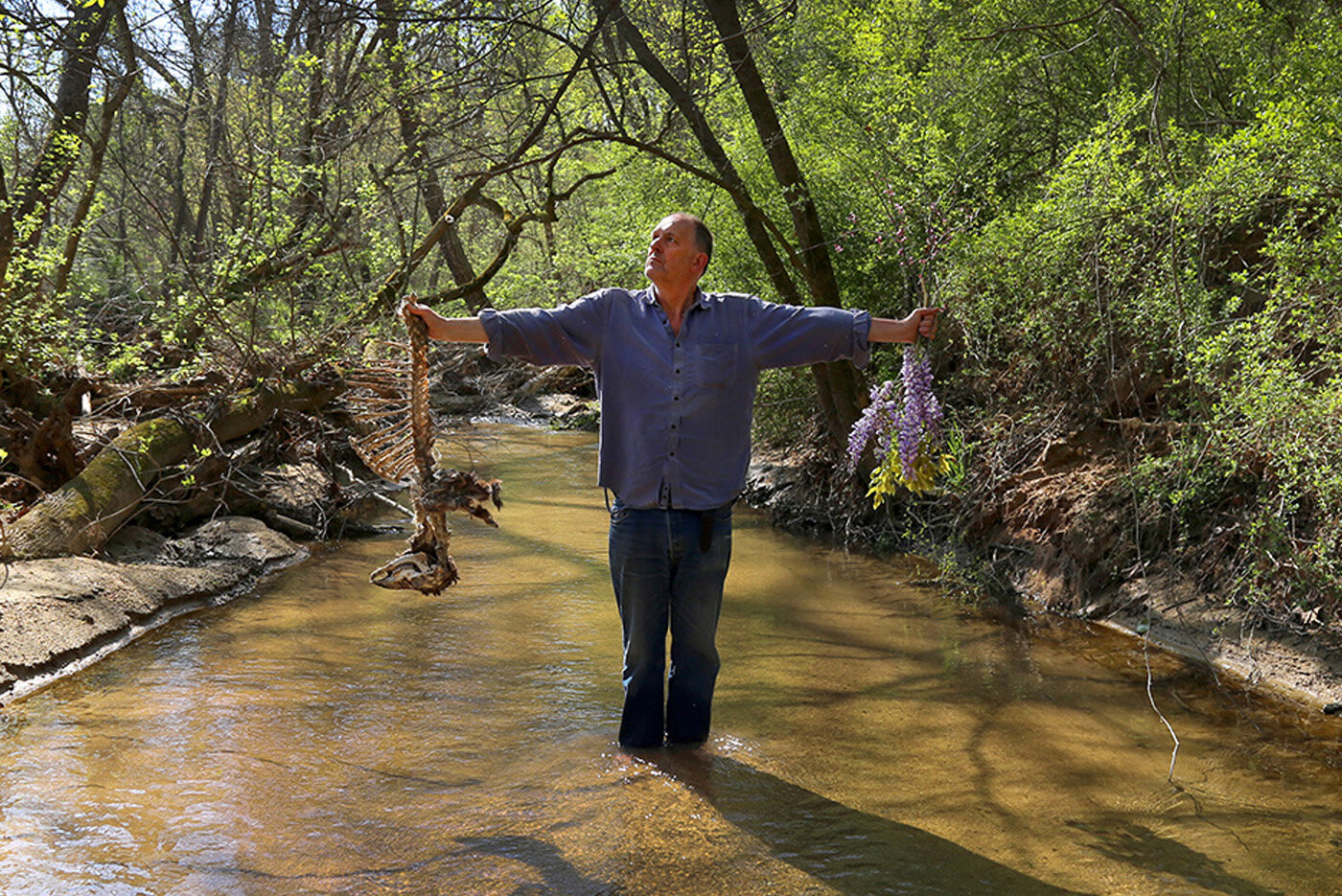In the age of digital, Bill Drummond's 12-year tour is an experiment in the art of human interaction
‘Best Before Death’ opens under the shadow of Birmingham’s Spaghetti Junction, to artist and ex-KLF pop star Bill Drummond crudely painting his own face black and white, guided only by some shouted instructions from out of shot. It’s when he strips to his jeans and gingerly steps into the filthy canal at his feet that you’ll begin to wonder what exactly it is you’re watching.
Throughout director Paul Duane’s character study of the travelling artist, that feeling never really goes away. Filmed over two years of Drummond’s 12-year world tour of 12 different cities, ‘Best Before Death’ redeems itself by capturing some unexpectedly spontaneous and sincere interactions from local passersby.
Drummond’s very unique brand of art consists of performing a variety of self-imposed tasks in each city he visits. These vary from baking cakes to shining shoes. Although mostly arbitrary, Drummond’s performances are conducive to honest conversation, genuine interaction and affection amongst strangers, a particularly rare commodity of our time. Performing in nondescript public locations and without a deterring film crew leads to all sorts of exchanges from “What are you doing ?” to “Why on earth are you doing it ?”.
At first Drummond seems to stymie the process. Not to mention that he’s also very reticent of Duane’s camera. His evasion of direct questions paired with his unwavering commitment to the tasks he sets himself is the unrelenting background noise to the film and discourages a lot of observers from further inquest. To many he will come across as aloof, self-important and his work contrived. But gradually, it does bear fruit. For every time Drummond cuts an inquisitor short or impatiently denies any higher meaning to his art, an unlikely bond is formed with a stranger, a moment of hilarity ensues or a debate is sparked.
The choice of setting, first bustling Kolkata, India, then the sleepy rust-belt town of Lexington, Kentucky, is similarly random yet effective. You could not picture two more different places, and yet both produce a similar cast of characters. There’s the hyperbolic young men who insist their worldview has been altered, the working mothers appreciative of the quality of his workmanship and the old men, who’s curiosity draws them in despite themselves. This is sometimes to Drummond’s irritation, who continues to insist that he is doing nothing more than banging a drum, building a bed or making soup.
Mercifully for the viewer, Duane shows a greater desire to explain the art than his subject does. He cleverly relays short excerpts of Drummond’s offhand comments that elucidate some of his choices. We discover that he once lived in Lexington as a child for instance, or that his tour is planned to end when he is 73, the age at which his father died.
‘Best Before Death’ can be an infuriating watch. At times even Drummond seems unsure of himself. Despite this, his work undeniably creates interesting situations that are entertaining to watch. Drummond’s determination to accomplish his tasks without external help and without explaining himself is what makes those situations possible, but at the risk of leaving the audience wanting more.








